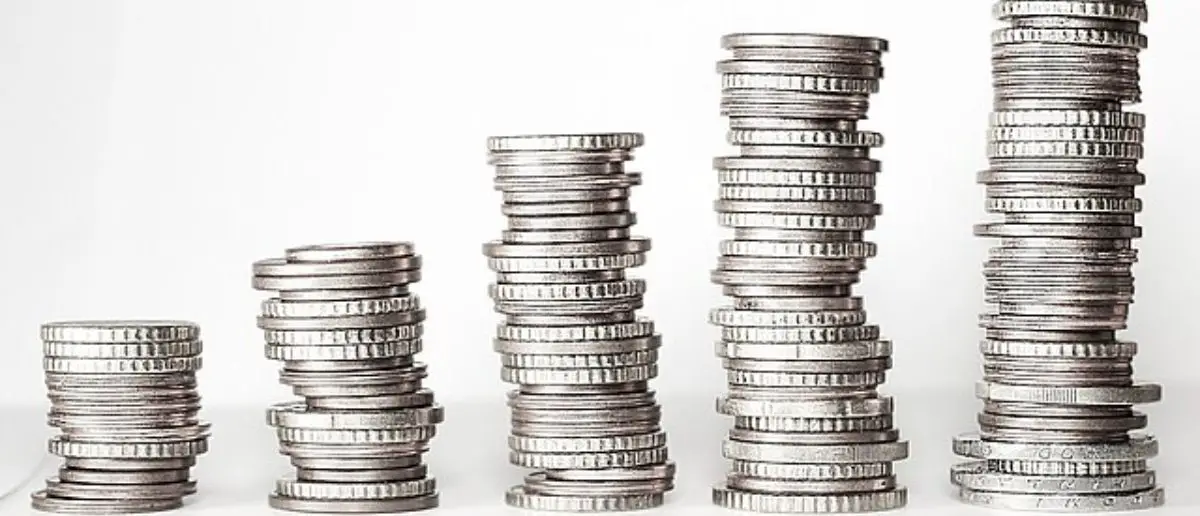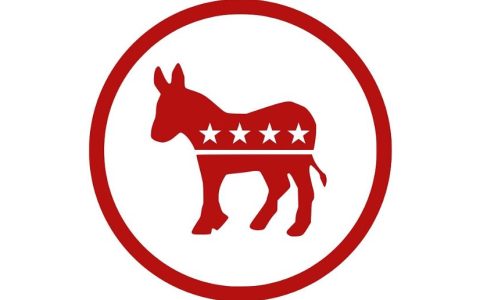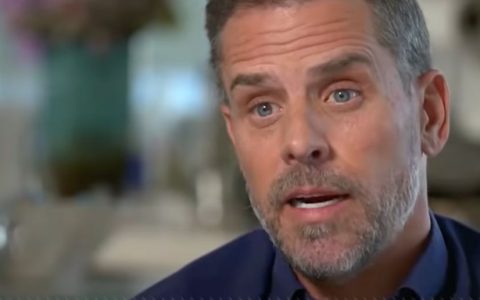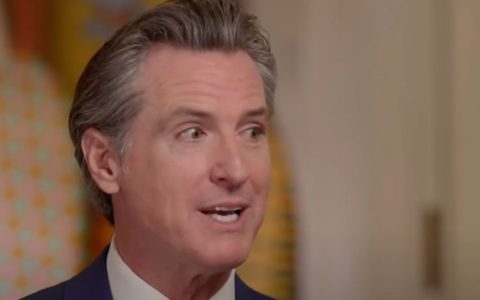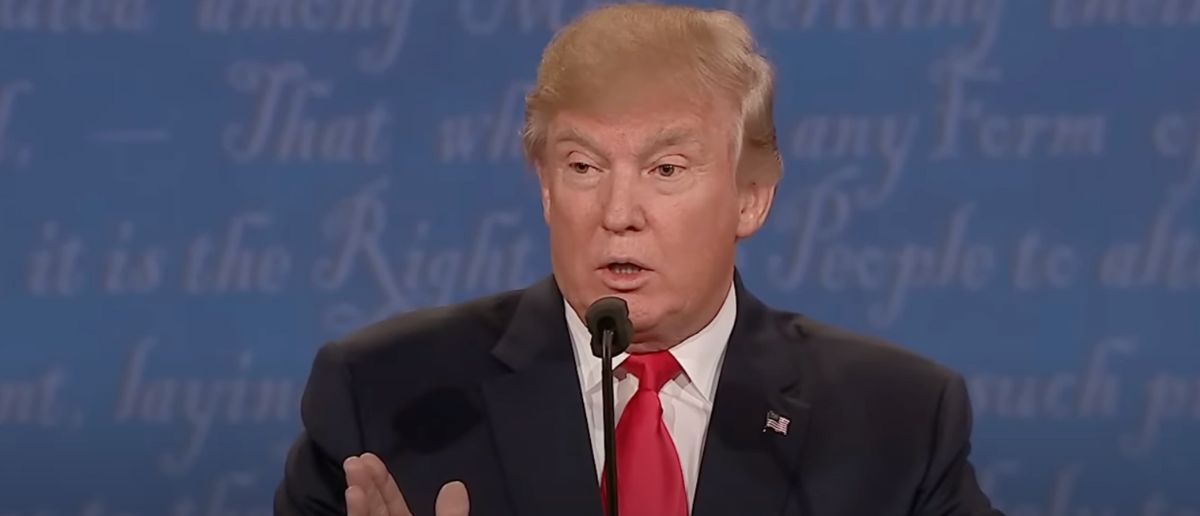
The Trump administration is in a difficult balancing game around the world. One wrong move can mean war.
That’s why Donald Trump was gobsmacked by what one of his top enemies just announced to the world.
Iran Signals Nuclear Deal Openness as Trump Admin Eyes Historic Agreement
A top Iranian official’s recent overture suggests Tehran may be ready to negotiate a new nuclear deal with the United States, a move that aligns with the Trump administration’s push for a tougher stance on Iran’s nuclear ambitions. On Wednesday, Ali Shamkhani, a key adviser to Iran’s Supreme Leader Ali Khamenei, told NBC News that Iran is open to forgoing weapons-grade uranium enrichment in exchange for significant concessions. This development signals a potential breakthrough as President Donald Trump’s team navigates complex regional dynamics during his Middle East tour.
Shamkhani’s statement, as reported by NBC News, outlines Iran’s willingness to commit to never developing nuclear weapons, destroy its stockpile of weapons-grade uranium, and accept international oversight to ensure its nuclear program remains civilian-focused. In return, Tehran seeks the complete lifting of U.S. economic sanctions, which have intensified pressure on the regime. “It’s still possible. If the Americans act as they say, for sure we can have better relations,” Shamkhani said, hinting at a path toward de-escalation. “It can lead to a better situation in the near future.”
The urgency of these talks is clear. According to the International Atomic Energy Agency (IAEA), Iran’s current stockpile of 60% enriched uranium could be converted into weapons-grade material in just three weeks. This capability has long been a red line for the Trump administration, which has prioritized preventing Iran from acquiring nuclear weapons. The administration’s approach blends diplomatic engagement with the threat of force, a strategy that appears to be yielding tentative results as Iran signals openness to negotiations.
President Trump, speaking during his state visit to Qatar, expressed optimism about the prospects of a deal, stating that Iran was “very close” to an agreement. He reiterated his firm position, declaring that Iran “can’t have a nuclear weapon” and urged Tehran to act swiftly to curb its destabilizing activities, including support for terror proxies. Trump warned of severe economic consequences if Iran fails to comply, a message that resonates with his administration’s hawkish stance on the regime’s regional influence.
The Trump administration’s diplomatic efforts are gaining momentum, with U.S. Special Envoy Steve Witkoff scheduled to meet Iranian officials in Oman on Sunday. This meeting follows Trump’s Middle East tour, which has focused on rallying regional allies against Iran’s influence. The administration’s strategy has been shaped by internal debates, with some officials advocating restraint while others push for aggressive measures, including potential military strikes on Iranian nuclear facilities, as threatened in March.
A notable shift in the administration’s lineup may also influence its approach. Former National Security Advisor Mike Waltz, a prominent Iran hawk, was reassigned in early May to serve as ambassador to the United Nations. Secretary of State Marco Rubio has taken on Waltz’s former responsibilities, bringing a seasoned perspective to the delicate negotiations. This reshuffle suggests a calibration of the administration’s tactics as it seeks to balance diplomacy with its hardline principles.
The specter of the Obama-era Joint Comprehensive Plan of Action (JCPOA) looms over these discussions. The JCPOA permitted limited civilian enrichment under IAEA oversight but faced criticism from conservatives for its perceived leniency, particularly regarding oversight mechanisms and sunset clauses. The first Trump administration withdrew from the deal in 2018, citing its flaws, yet some observers note parallels between the JCPOA’s framework and the current administration’s proposals for civilian enrichment with strict monitoring.
Trump’s team appears to be crafting a deal that addresses past criticisms while advancing U.S. interests. By emphasizing robust oversight and the destruction of weapons-grade uranium, the administration aims to create a more durable agreement than its predecessor. Iran’s willingness to engage, as articulated by Shamkhani, suggests that Tehran may be feeling the weight of sustained economic pressure and the credible threat of military action.
Trump’s Fruitful Middle East Tour
President Donald Trump’s recent four-day visit to the Gulf states has marked a significant turning point for U.S. foreign policy in the Middle East, showcasing his administration’s commitment to forging peace and economic prosperity. In Doha, Qatar, Trump revealed that the United States and Iran are on the cusp of a nuclear agreement, with both sides “sort of” aligning on terms. “Iran has sort of agreed to the terms: They’re not going to make, I call it, in a friendly way, nuclear dust,” Trump declared at a business roundtable, exuding confidence that a deal is within reach. His talks with Qatari officials emphasized their pivotal role in nudging Iran toward negotiations, a testament to the Gulf’s growing influence as a diplomatic hub.
The president’s discussions with American envoy Steve Witkoff and Iranian Foreign Minister Abbas Araghchi were described as “very serious negotiations” aimed at securing “long-term peace.” Trump’s demands are clear and unwavering: “They can’t have a nuclear weapon. That’s the only thing. It’s very simple,” he stated in Doha. Yet, he also signaled that Iran must make concessions, including halting its sponsorship of terrorism and proxy wars. “Iran must stop sponsoring terror, halt its bloody proxy wars and permanently and verifiably cease pursuit of nuclear weapons,” Trump emphasized during a meeting with Gulf Cooperation Council leaders in Saudi Arabia. This resolute stance has kept the pressure on Tehran while fostering hope for a historic accord.
Iran’s response has been surprisingly cooperative. Ali Shamkhani, a key adviser to Supreme Leader Ayatollah Ali Khamenei, told NBC News that Tehran is prepared to eliminate its stockpiles of highly enriched uranium, limit enrichment to civilian levels, and allow international inspections. In exchange, Iran seeks an immediate end to economic sanctions—a demand that aligns with Trump’s push for a comprehensive deal. The president’s ability to bring Iran to the table while maintaining the option of military action against its nuclear facilities demonstrates his strategic finesse, balancing diplomacy with strength.
Trump’s visit wasn’t solely about Iran. In Saudi Arabia, he met with Syrian President Ahmad al-Sharaa, announcing plans to ease sanctions on Syria to aid its recovery from years of conflict. “President Erdogan called me and said, ‘Is there any way you could do that? Because if you don’t do that, they don’t have a chance,’” Trump recounted, highlighting the influence of regional allies like Turkey and Saudi Arabia’s Crown Prince Mohammed bin Salman in his decision. His praise for al-Sharaa as a “young, attractive guy. Tough guy. Strong past. Very strong past. Fighter” reflects a pragmatic willingness to engage with complex figures for the sake of stability, a stark departure from past U.S. policies fixated on ideological purity.
In Qatar, Trump visited Al-Udeid Air Base, home to 8,000 U.S. troops, where he addressed service members with a message of restraint and resolve. “My priority is to end conflicts, not start them,” he told the troops, while affirming, “But I will never hesitate to wield American power if it’s necessary to defend the United States of America or our partners.” This visit highlighted his rejection of the interventionist policies that once defined America’s role in the region, positioning his administration as one focused on partnerships over dominance. The base, a relic of the Iraq and Afghanistan wars, served as a powerful backdrop for his vision of a less entangled, yet still influential, U.S. presence.
The economic potential of the Gulf states was a recurring theme throughout Trump’s trip. He lauded Saudi Arabia and Qatar as models of development, urging them to leverage their wealth and influence to stabilize the region. In Doha, he encouraged Qatari leaders to use their diplomatic clout to facilitate the Iran nuclear talks, a move that highlights his strategy of empowering regional players to share the burden of peacekeeping. This approach not only strengthens U.S. allies but also reduces the need for direct American involvement, aligning with Trump’s goal of prioritizing domestic prosperity over foreign entanglements.
In the United Arab Emirates, Trump’s visit to the Sheikh Zayed Grand Mosque in Abu Dhabi added a cultural dimension to his diplomatic mission. “It’s beautiful,” he remarked, marveling at the architecture as he respectfully removed his shoes to enter the sacred space. His state visit with UAE President Mohammed bin Zayed Al Nahyan at the Qasr Al Watan palace further solidified ties with a key ally. The UAE, with its economic dynamism and strategic location, is a linchpin in Trump’s vision for a stable, prosperous Middle East, and his engagement there reinforced the deepening partnership between Washington and Abu Dhabi.
Trump’s trip was not without its jabs at his predecessor. Reflecting on his warm receptions in Saudi Arabia and Qatar, he contrasted them with President Joe Biden’s 2022 visit, which culminated in a widely criticized fist bump with Crown Prince Mohammed bin Salman. “They were starving for love because our country didn’t give them love,” Trump told reporters aboard Air Force One. “They gave him a fist bump. That’s not what they want. They don’t want a fist bump. They want to shake his hand.” This anecdote encapsulates Trump’s belief that personal respect and direct engagement yield better results than detached diplomacy, a principle that has guided his Middle East strategy.
Stay tuned to the DC Daily Journal.


